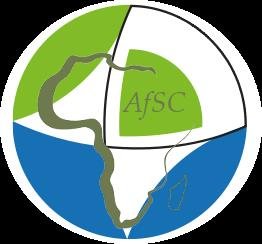Africa Seismological Commission (AfSC)
Formation of the **African Seismological Commission (AfSC)**
 The African Seismological Commission (AfSC) was launched on the 22 January 2014 during an Africa-Array workshop held at WITS university in Johannesburg, South Africa.
The African Seismological Commission (AfSC) was launched on the 22 January 2014 during an Africa-Array workshop held at WITS university in Johannesburg, South Africa.
The meeting was well attended and an attendance register was circulated in order to build a contact database of all interested parties. There were representatives from 21 African countries at the meeting: Algeria, Ethiopia, Madagascar, Ghana, Malawi, Zimbabwe, Zambia, Angola, Egypt, Senegal, Morocco, Libya, Nigeria, Cameroon, DR Congo, Tanzania, Mozambique, South Africa, Cape Verde Republic, Botswana and Rwanda.
Background
The East African Rift System (EARS), the most extensive rifts on the Earth's surface, and the Cameroon Volcanic Line (CVL) are the two most prominent tectonic features that attract global seismological collaboration in recent years. There is increasing seismological research activity in the continent with increasing state-of-the-art broadband seismic stations funded though several overseas collaborations and government initiatives. The number of African seismologists that survived brain drain is also picking up.
Noting this potential, in July, 2011, the IASPEI Resolution 2 passed the establishment of the African Seismological Commission (AfSC) in Melbourne, Australia. IASPEI encouraged the formation of an African Seismological Commission so as to foster more cooperation within the region and the organization of regular IASPEI regional meetings.
Officers
- President – Mohamed Elgabry (Egypt)
- 1st Vice President – Sophie Jepkemoi (Kenya)
- 2nd Vice President – Mako Sitali (Namibia)
- Secretary General – Brassnavy Manzunzu (Zimbabwe)
- Member – Farida Ousadou (Algeria)
- Past President – Paulina Amponsah (Ghana)
Reports
- Africa Seismological Commission Report (PDF, 64 KB)
